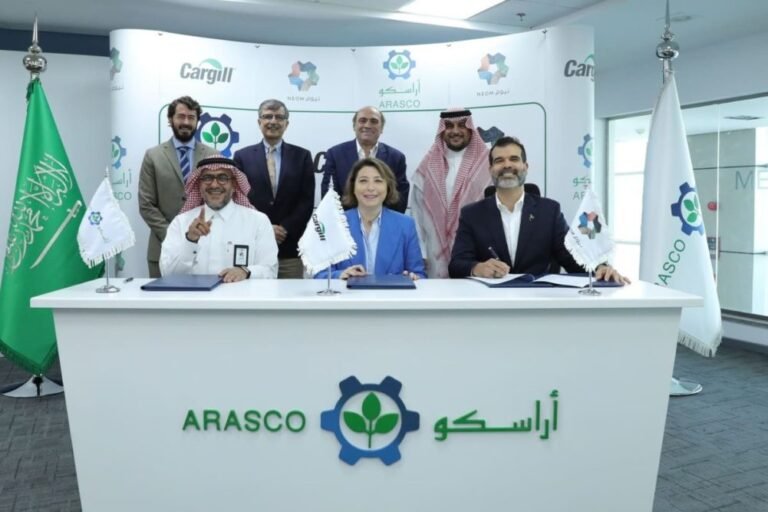Memorandum of understanding (MoU) signed focusing on expanding Saudi Arabia’s overall fish farming to support the country’s drive towards seafood self-sufficiency by 2030
Saudi Arabia’s efforts to increase its aquaculture production volume to 600,000 metric tons (MT) by 2030 received a major boost after two state-controlled institutions signed an agreement with American global food corporation Cargill to expand fish farming in the country.
Cargill, the Arabian agricultural services company (ARASCO), a national food and closed joint stock firm, and the NEOM Company signed a memorandum of understanding (MoU) in early February 2023, covering aquaculture development in a region in northwest Saudi Arabia. The deal is focused on expanding Saudi Arabia’s overall fish farming to support the country’s drive towards seafood self-sufficiency by 2030 using environmentally friendly processes.
“This agreement will ultimately lead to addressing the need to replace fishmeal by more sustainable fish feed. Additionally, it aligns with NEOM’s efforts to facilitate the production and supply of sustainable seafood while protecting the marine environment” said NEOM Food Head Juan Carlos Motamayor.
Partners are expected to work together to explore and scale up sustainable ways to meet rising domestic demand for aquaculture, including through research and development into more sustainable feed sources.
The NEOM Company – which is also the developer of a proposed $500 billion (EUR 459 billion) commercial and residential development in Saudi Arabia – has made forays into aquaculture in the past. In 2021 the company signed a MoU with aquaculture technology firm Tabuk Fish Company to develop a fish hatchery on the northwest shores of the Red Sea. The farm, the region’s largest fish farm, will operate with a capacity of 70 million fingerlings.
Saudi Arabia also made a deal with Dubai, United Arab Emirates-based Aqua Bridge Farms Co. for a hatchery project in Al-Lith, Makkah Province. That hatchery project will produce European sea bass and European sea bream hatchlings for aquaculture

